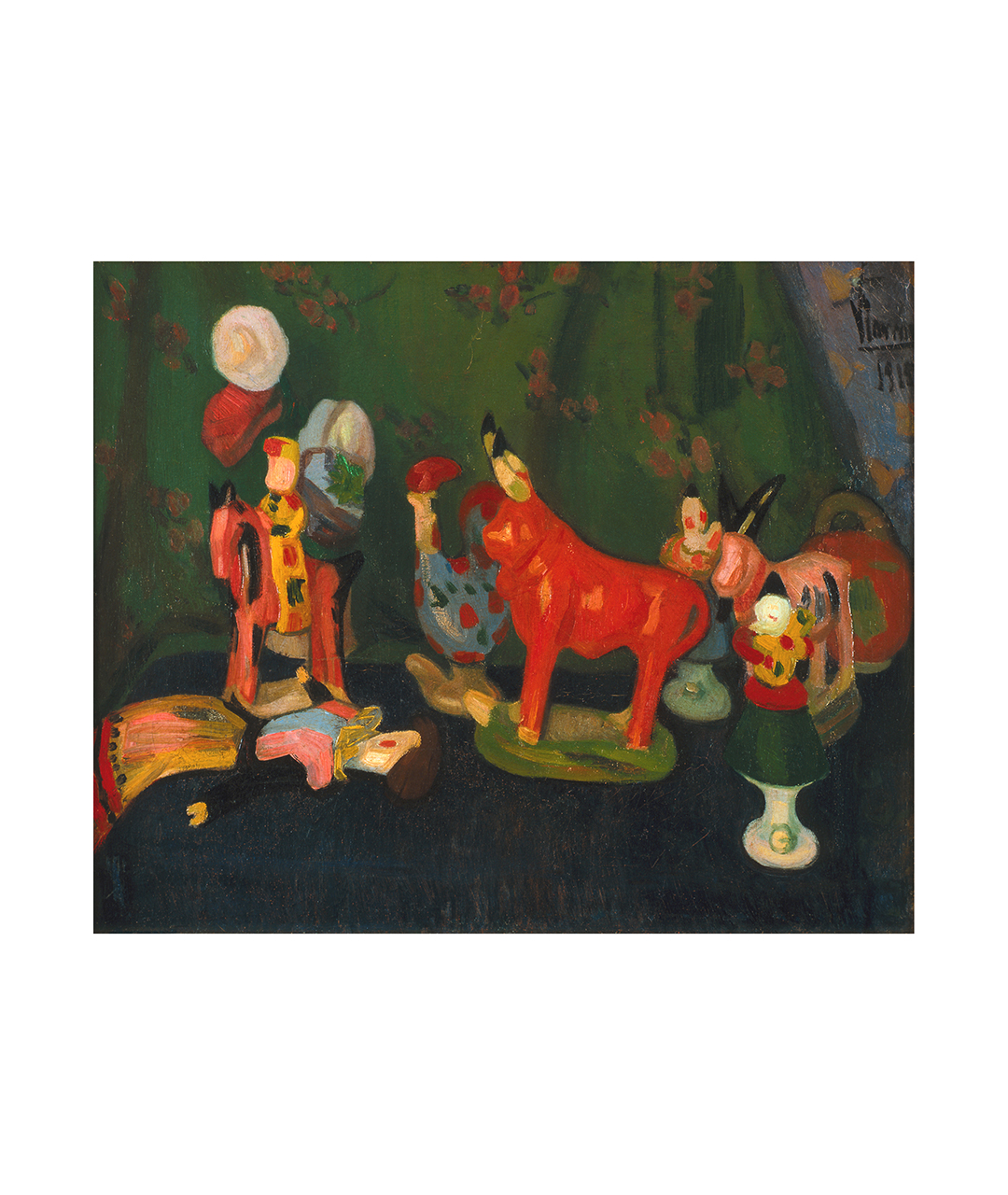Considered one of the greatest painters of the first generation of Portuguese modernism, Eduardo Afonso Viana was born on 28 November 1881 in Lisbon.
He attended the Lisbon Academy of Fine Arts, where he was a pupil of Veloso Salgado, among others, between 1896 and 1905. That same year he left for Paris, where he attended Jean-Paul Laurens’ studio at the Julian Academy.
Throughout this period he took part in various exhibitions in Portugal. He returned from Paris in 1915 and spent around two years living with Sonia and Robert Delaunay, who were war refugees in Portugal and settled in Vila do Conde.
Eduardo Viana held his first solo exhibition in Porto, at the Galeria da Misericórdia, in 1920 and another in Lisbon in 1921. He held his third and final solo exhibition in this city in 1923.
That year he joined the exhibition of the Five Independents (Dórdio Gomes, Henrique and Francisco Franco, Alfredo Migueis and Diogo de Macedo) in Lisbon. In 1925, he organised the first Autumn Salon at the Sociedade Nacional de Belas Artes (SNBA), an exhibition that marked a new artistic phase in the country. In 1926, he took part in the second Autumn Salon, alongside António Soares, José Tagarro and Carlos Botelho, among others.
Between 1930 and 1940, Viana lived for long periods in Paris and Brussels. In 1965 he was awarded the National Art Prize by the National Information Secretariat and in 1967 he took part in the Brussels International Exhibition.
In Porto, in December 1967, a few months after his death, an exhibition of the paintings, some unfinished, left in the painter’s studio was held at the Alvarez Gallery. The very next year, in April, the first retrospective exhibition of his work was held, organised by the National Information Secretariat.
Eduardo Viana was the eldest of a group of painters born between 1881 and 1893 who marked the first modern generation in Portugal: Viana, Amadeo, Santa Rita and Almada.
His contact with Amadeo and Robert and Sónia Delaunay led him to experiment and compose works with an abstract tendency. Fundamental documents of Portuguese modernity, the paintings he made in 1925 for the decoration of the café A Brasileira, landscapes of Sintra and the Algarve, along with the nudes of the same year, the artist’s “programme painting”, are examples of the maturity he reached and expressed in chromatic sensualism.
From 1940 onwards, permanently in Portugal, isolated from everything and everyone, he concentrated on still life, the almost exclusive subject of his painting from then on.

